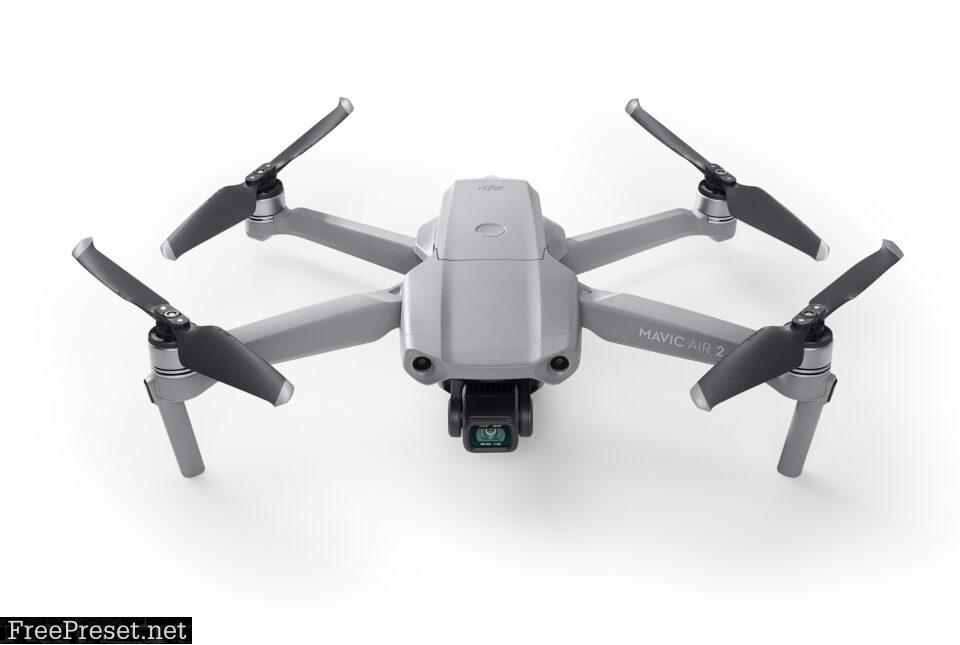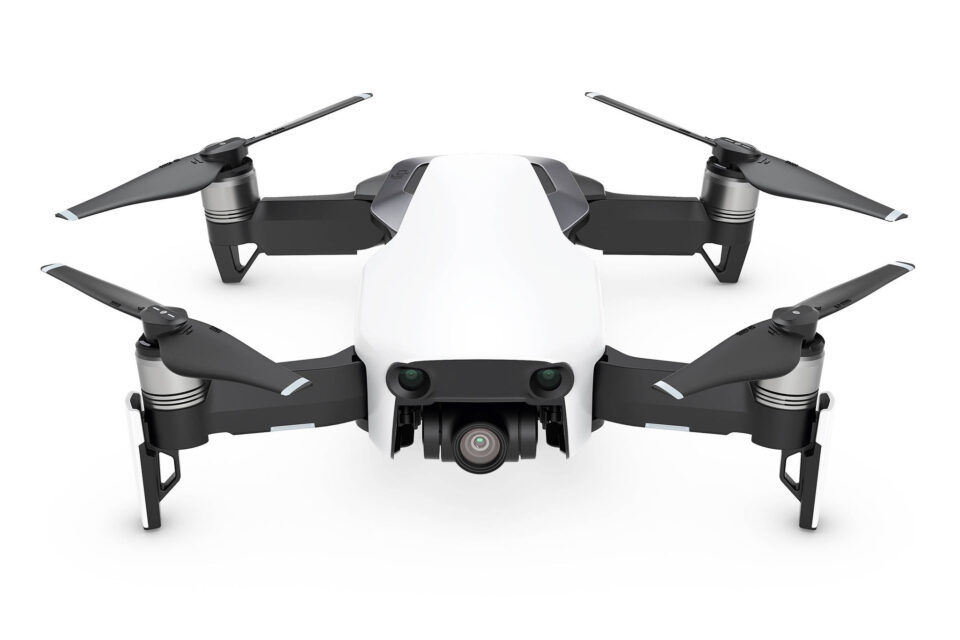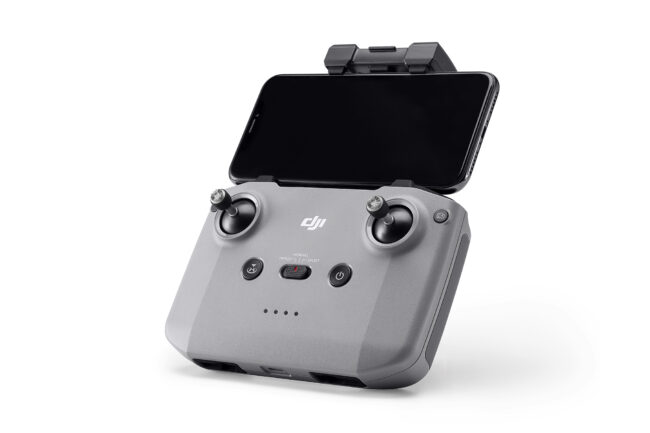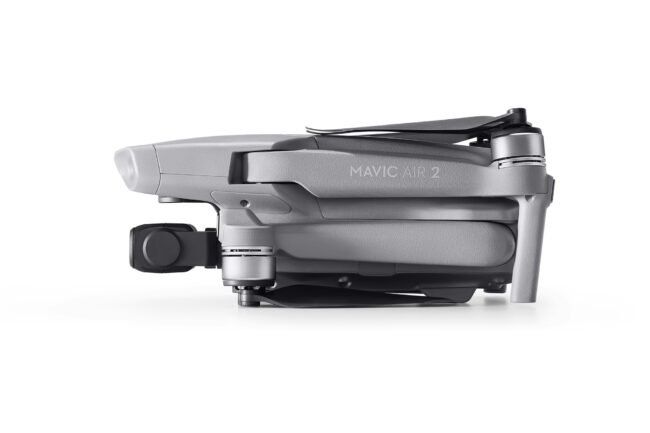Today DJI announced its next-generation drone, the Mavic Air 2. Similar to its predecessor, it is a relatively small and compact drone with excellent stills and video shooting capabilities, extended battery life, and upgraded automatic flight features. The Mavic Air 2 will be available in mid-May for $799, with the “Fly More” option retailing at $988.

So what has changed from the Mavic Air in this new Air 2? Quite a bit, actually. As you can see from the above image, the exterior look of the Mavic Air 2 now resembles its bigger brother, the Mavic 2 Pro instead of the simpler design of the Mavic Air-series drones that came in three different colors (below is the white):

Two big reasons for the change are the larger 1/2″ sensor that needs a bigger housing to accommodate it, as well as a much larger battery.
DJI says that the Mavic Air 2 sports a 1/2″ Quad Bayer CMOS sensor, capable of shooting 4K videos at up to 60 FPS, 4K HDR video at 30 FPS, as well as 240 FPS slow-motion videos at 1080P resolution. That’s a noticeable change compared to the smaller 1/2.3″ sensor on the Mavic Air that is only able to shoot 4K video at 30 FPS and slow-motion video at 120 FPS.
In addition, the DJI Mavic Air 2 is capable of shooting 8K hyper lapses when using one of the four automated flight modes: Free Movement, Circle, CourseLock and WayPoints.
For stills shooting, the new Mavic Air 2 can capture 12 MP stills, as well as 48 MP supersampled stills, for those who want more resolution. DJI’ 3-axis gimbal should be good enough to compensate for movement when shooting high-resolution stills, although it is probably not going to be a good idea when shooting in low-light and windy situations in practice. A new “SmartPhoto” capture mode has also been added, which is supposed to be able to perform advanced scene analysis to pick one of the three updated shooting modes automatically, depending on shooting conditions: HDR, Hyperlight and Scene Recognition. When shooting scenes with extreme dynamic range, the HDR mode will capture seven images at different exposures and stitch them into a single photo. The Hyperlight mode basically uses image averaging to snap a few images and merge them together to reduce noise, while the Scene Recognition mode applies a particular preset to an image to render it for the best overall look.
Take a look at DJI’s video promotion that details some of these features:
In addition to all the interior features, the Mavic Air 2 sports completely new motors and electronic speed controllers for better stability and control of the drone. While both Mavic Air and Mavic Air 2 sport front and back sensors for obstacle avoidance, the Air 2 has depth sensors that can more accurately detect how far it is from the ground, as well as offer more advanced obstacle avoidance while flying. The Mavic Air 2 has the APAS 3.0 system that is capable of automatically flying around potential obstacles, rather than just stopping the flight with warnings.
But the most impressive of all the specifications is the flight time. Thanks to the much larger 3,500mAh battery (vs 2,375mAh), the flight time has now been extended to 34 minutes on a single charge. That’s quite a lot of flying time with the drone when compared to the predecessor that barely managed to fly around 21 minutes. When using my Mavic Air, I usually don’t go beyond 15 minute flight time, because of the danger of crashing it. Being able to fly almost twice that time is quite encouraging.

The controller has also been changed completely – it is no longer a palm-sized controller that you have to open up on the bottom to fit your phone. It is larger and more comfortable to hold, with the phone being placed on the top part of the controller, as shown in the above image.
One of my frustrations with the Mavic Air has to do with the transmission of signal – it starts getting weak at even moderate distances. The Mavic Air 2 now sports DJI’s OcuSync 2.0 protocol that supports both 2.4Ghz and 5.8Ghz frequency bands, which provides a maximum range of 10 km unobstructed. That’s great news, because combined with the much larger battery, you will be able to fly this drone over much longer distances without worrying about losing signal, or running out of battery.
The DJI Mavic Air 2 will also feature a number of updates to its features, including ActiveTrack 3.0, Point of Interest 3.0 and Spotlight 2.0.
Unfortunately, all these new changes do come at a higher cost, as well as a heavier footprint. The DJI Mavic Air 2 now weighs 140 grams heavier than its predecessor (570 grams), primarily because of the higher-capacity battery. The controller is also likely going to be heavier, although its exact weight has not been provided by DJI yet.
Here is how the drone will look when fully folded:

If you would like to support our efforts, you can pre-order your copy of the DJI Mavic Air 2 using the below links from our trusted partner B&H Photo Video: